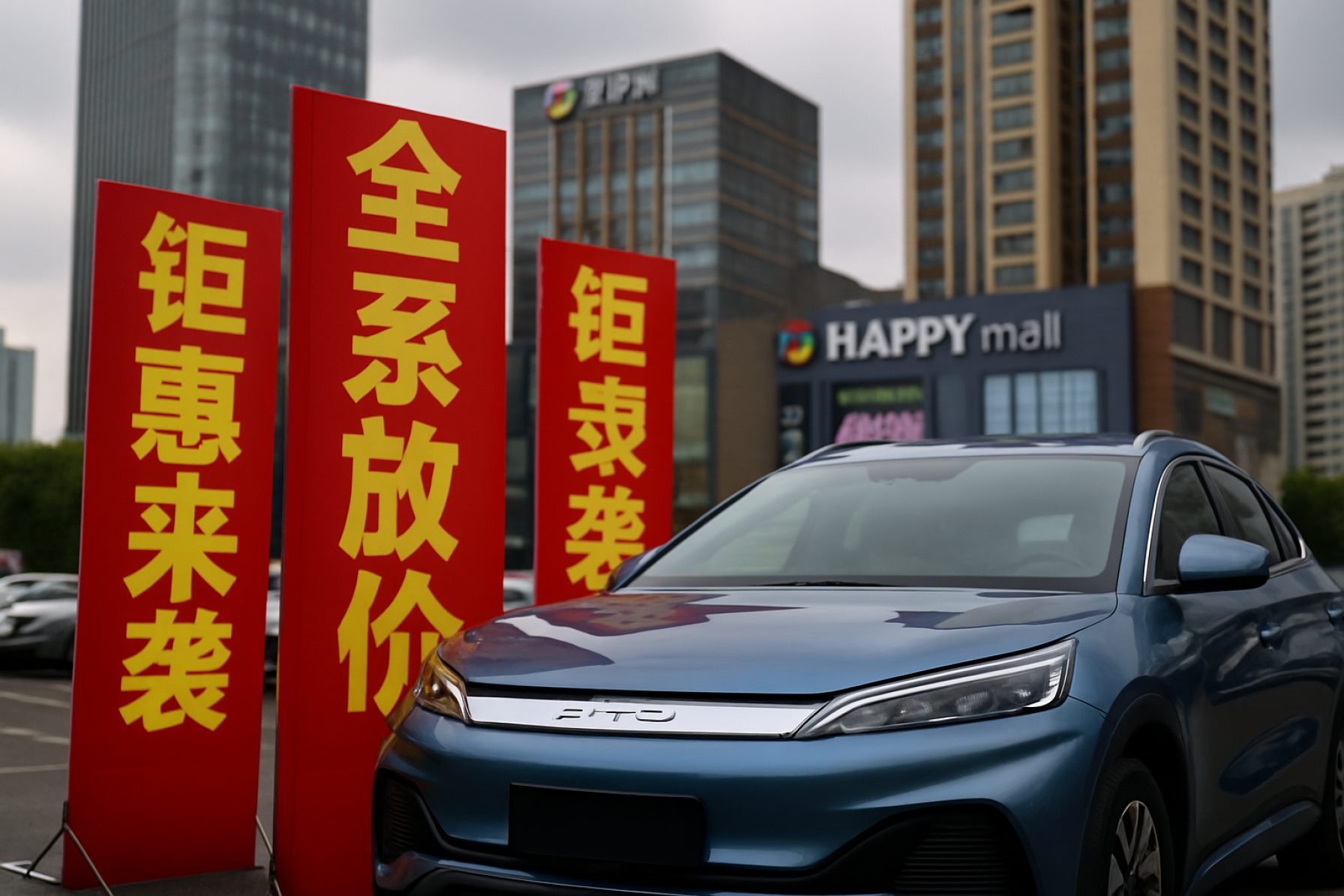BYD’s Massive Discounts Trigger Panic and Price Cuts Across Chinese EV Industry—Is a Major Shakeout Coming?
BYD slashes prices by up to 34%, sparking fierce EV price battles and putting intense pressure on rivals as Chinese auto stocks tumble.
- BYD discounts reach up to 34% on 22 models
- Chinese auto inventories: 3.5 million units, highest since 2023
- BYD’s inventory value: $21.6 billion (up 33% in Q1 2025)
- BYD 2025 sales goal: 5.5 million vehicles, 800,000 units overseas
China’s electric vehicle (EV) market is entering a storm. BYD, the nation’s leading EV maker, has unleashed unprecedented discounts of up to 34% across its popular battery and plug-in hybrid models—a move shaking the industry to its core. As rival automakers scramble to match BYD’s bold offensive, analysts warn that the price war could spark a wave of consolidation during 2025, driving weaker competitors out of business.
From earlier this year, BYD’s aggressive “fixed price” and subsidy promotions sent shockwaves across China’s auto sector. The latest campaign, running through June, offers deals so deep that drivers can now snag a BYD for as little as $7,700. But these jaw-dropping prices are rattling investors and rivals alike, sending EV stock prices tumbling and sparking questions about the industry’s long-term health. Stay up to date with industry trends at Nikkei and Reuters.
Q: Why Has BYD Triggered a Fierce Price War in China’s EV Market?
BYD’s leadership ambitions are clear: the company aims to sell 5.5 million vehicles in 2025, with 800,000 units destined for markets beyond China. But with swelling inventories and rivals like Geely, Leapmotor, and Xpeng gaining technological ground, BYD faces mounting pressure.
By slashing prices up to $7,400 on top-tier models—and making entry-level vehicles like the AI-enhanced Seagull available under $8,000—BYD seeks to sustain its dominance and force competitors into a corner.
Q: How Are Competitors Responding to BYD’s Price Offensive?
The response was immediate. Geely’s Galaxy brand and Leapmotor, backed by Stellantis, rolled out limited-time offers nearly matching BYD’s price cuts. Even state-backed giants like Chang’an jumped in with deep discounts—signaling that no automaker can afford to stand still.
Traditional joint ventures involving Japan’s Toyota, Nissan, and Mazda are also launching new EVs tailored for China’s competitive climate. The stakes? Survive—or merge with rivals as industry consolidation accelerates.
How Will This Chaos Shape China’s EV Market?
Wholesale discounting isn’t without risks. With inventories soaring to the highest levels since December 2023, many auto brands are stuck with rows of unsold cars. BYD’s own stockpile reached an eye-watering $21.6 billion by March, up a third from the previous quarter.
Analysts suggest this race to the bottom may soon force cash-strapped or mid-tier manufacturers out of business. S&P Global recently warned that capacity cuts, mergers, and partnerships are inevitable if profits are to recover.
Will Regulators or Industry Leaders Step In?
Market insiders say intervention could be imminent. In March, China’s SASAC announced intentions to restructure central government-owned automakers. Legacy brands like Chang’an and Dongfeng have already begun merges to shore up competitiveness, and Geely is delisting its Zeekr brand from the NYSE to focus on cost efficiency.
Without regulatory action, analysts warn the latter half of 2025 could see the weakest EV players swept aside as competition zeroes in on cost control.
How Can Car Shoppers and Investors Navigate These Volatile Times?
If you’re eyeing an EV, deals have rarely been this good. But shoppers should weigh short-term savings against long-term service, brand stability, and potential market exits. Investors, meanwhile, should monitor balance sheets, merger news, and government policy signals closely.
For more on the global EV landscape, visit Bloomberg, or check out the latest on technological advances at Tesla and BYD.
Stay Ahead in China’s EV Revolution!
- Monitor price trends and industry news frequently
- Research carmakers’ long-term stability before making purchases
- Watch for upcoming mergers and regulatory changes in 2025
- Don’t miss out on historic EV deals—but act fast, as market conditions may shift
